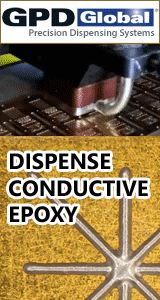Printed Circuit Board Assembly & PCB Design Forum
SMT electronics assembly manufacturing forum.
- SMTnet
- »
- Electronics Forum
- »
- ENIG poor wetting
ENIG poor wetting
![]() I have a customer with up to 8% scrap from one board supplie...
- Jul 29, 2002
by
Rick Lathrop
I have a customer with up to 8% scrap from one board supplie...
- Jul 29, 2002
by
Rick Lathrop
![]()
![]()
![]() Stand-ups are a common problem with 0402. Search the fine S...
- Jul 29, 2002
by
davef
Stand-ups are a common problem with 0402. Search the fine S...
- Jul 29, 2002
by
davef
![]()
![]()
![]() When you talk about 'poor wetting', 'dewett', 'no wets', etc...
- Jul 30, 2002
by
davef
When you talk about 'poor wetting', 'dewett', 'no wets', etc...
- Jul 30, 2002
by
davef
![]()
![]()
![]() Dave, I am very interesting to know about the dewetting or p...
- Jul 30, 2002
by
Dason C
Dave, I am very interesting to know about the dewetting or p...
- Jul 30, 2002
by
Dason C
![]()
![]()
![]() Hi Dave, The paste applied to the board ends up on the tombs...
- Jul 30, 2002
by
Hi Dave, The paste applied to the board ends up on the tombs...
- Jul 30, 2002
by
![]()
![]() Dewetting: Solder does not adhere to lead or land, caused by...
- Jul 30, 2002
by
davef
Dewetting: Solder does not adhere to lead or land, caused by...
- Jul 30, 2002
by
davef
![]()
![]()
![]() Comments are:
* Peak at 245�C for 40 sec seems like a very ...
- Jul 30, 2002
by
davef
Comments are:
* Peak at 245�C for 40 sec seems like a very ...
- Jul 30, 2002
by
davef
![]()
![]()
![]() Perhaps I was too brief in my profile description the 40 sec...
- Jul 31, 2002
by
Rick Lathrop
Perhaps I was too brief in my profile description the 40 sec...
- Jul 31, 2002
by
Rick Lathrop
![]()
![]()
![]() Reflecting back on earlier comments, the majority of dewetti...
- Jul 31, 2002
by
davef
Reflecting back on earlier comments, the majority of dewetti...
- Jul 31, 2002
by
davef
![]()
![]()
![]() Good morning Dave F. I am not going to try to touchup the so...
- Aug 01, 2002
by
Good morning Dave F. I am not going to try to touchup the so...
- Aug 01, 2002
by
Rick Lathrop
- SMTnet
- »
- Electronics Forum
- »
- ENIG poor wetting







